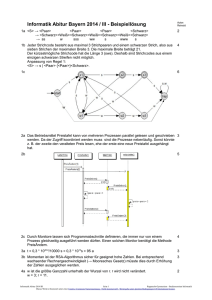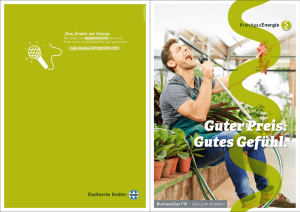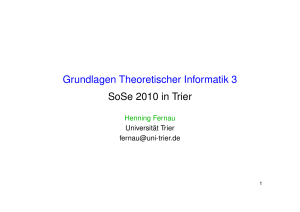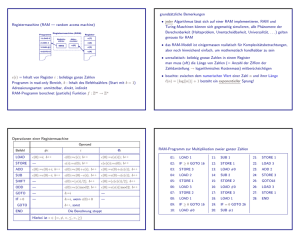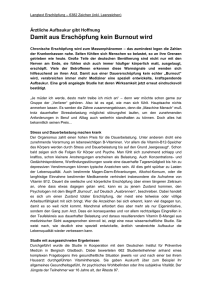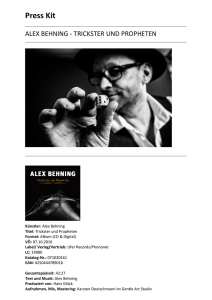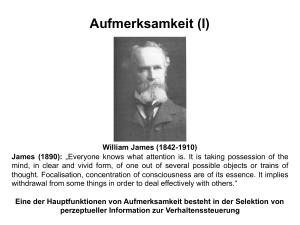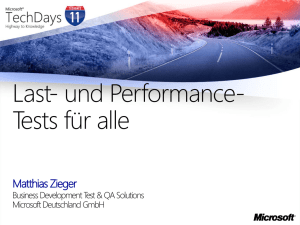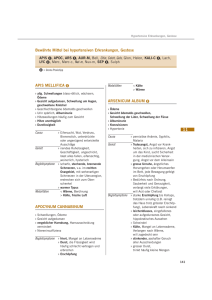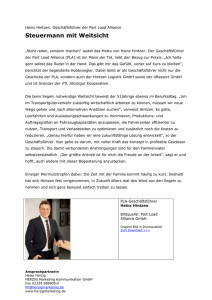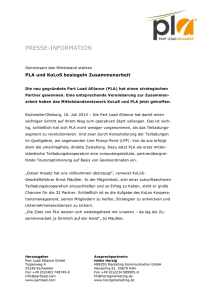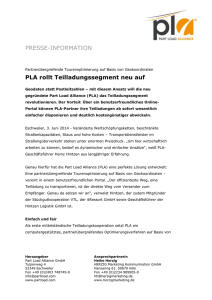Effort-Reward
Werbung
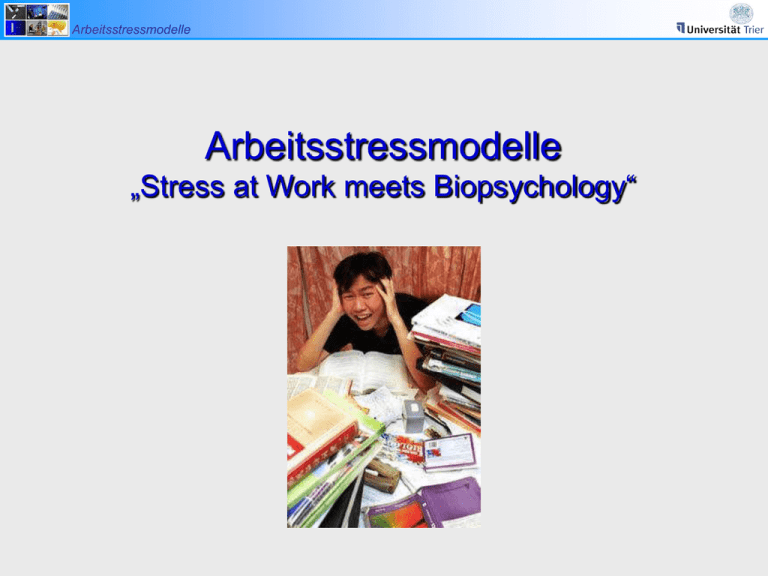
Arbeitsstressmodelle Arbeitsstressmodelle „Stress at Work meets Biopsychology“ Arbeitsstressmodelle Studien zu Stressbelastung und Burnout Integration arbeitspsychologischer und psychobiologischer Forschungsmethoden zur Erfassung differentieller Stressmuster bei chronischem Arbeitsstress Arbeitsstressmodelle Die Tagespresse dass bis zu einem Drittel der Lehrkräfte unter dem BurnOut-Syndrom“ leiden. 2001 Arbeitsstressmodelle Disability for Service Retirement Total 2000 Teacher (< A13) Teacher (> A13) Due to Disability % - Disability Male Female Total Male Female Total Male Female Total 292 391 683 230 324 554 78,8 82,9 81,1 261 75 336 153 49 202 58,6 65,3 60,1 primarily depressive & exhaustion/burnout et al., 2002) Teacher total 553 symptoms 466 1019 383 373 756(Weber 69,3 80,0 74,2 Academia 33 4 37 6 2 8 18,2 50,0 21,6 Police / Jjudiciary 258 6 264 104 6 110 40,3 100,0 41,7 remaining administration Lower grade 122 9 131 81 8 89 66,4 88,9 67,9 Middle grade 164 17 181 85 13 98 51,8 76,5 54,1 Higher grade 137 9 146 43 4 47 31,4 44,4 32,2 Administration total 423 35 458 209 25 234 49,4 71,4 51,1 Sum 1267 511 1778 702 406 1108 55,4 79,5 62,3 Source: ZBV und Beamtenversorgungsbericht Rheinland-Pfalz Arbeitsstressmodelle Erfassung von psychischer Belastung/Beanspruchung am Arbeitsplatz • Burnout / Vitale Erschöpfung • Erfassung von „Job Strain“: Beanspruchung und Handlungsspielraum: “Job Demand-Control“ • Erfassung von Gratifikationskrisen: “Effort-Reward Imbalance“ Überengagement: “Overcommitment“ Arbeitsstressmodelle Norm DIN EN ISO 10075 1-3 Quelle: Website zur Norm DIN EN ISO 10075 Arbeitsstressmodelle Appels: Vitale Erschöpfung • • • • • • • • • aus: Kopp et al. (1998) Psychosom Med, 60:752-8 Fühlen Sie sich oft müde? Haben Sie oft Probleme einzuschlafen? Wachen Sie Nachts öfters auf? Fühlen Sie sich ausgelaugt? Fühlen Sie sich in letzter Zeit lustloser als früher? Irritieren Sie Kleinigkeiten in letzter Zeit mehr als früher? Haben Sie das Gefühl: " Meine Batterien sind leer"? Fühlen Sie sich entmutigt? Wachen Sie manchmal erschöpft oder ermüdet auf? “Ja” = 2 Punkte, “weiss nicht” = 1 Punkt, “nein” = 0 Punkte 0 - 3 Punkte = keine Erschöpfung 4 - 10 Punkte = mittlere Erschöpfung 11 - 14 Punkte = starke Erschöpfung > 14 Punkte = Erschöpfungskrise Arbeitsstressmodelle Model of Effort-Reward-Imbalance (Siegrist, 1996) Mangel an Reziprozität zwischen den persönlichen Kosten (“effort“: 6 Items) und dem Gewinn (“reward“: 11 Items) bei der Arbeit führt zu Stress: ERI (Effort-Reward-Imbalance = Gratifikationskrise) (a) Extrinsische Komponente: Imbalance wird akzeptiert, falls → keine Alternativen vorhanden sind /“reward” Abhängigkeit besteht / Immobilität →“effort” strategische Ziele verfolgt werden -Einkommen und Karriere → intrinsische Motivation vorliegt (z.B. OC) -Anerkennung -Anforderungen -Verpflichtungen E/R -Jobsicherheit (b) Intrinsische Komponente: Motivation Verausgabungsbereitschaft Arbeitsstressmodelle Blutdruck, Herzrate, Herzratenvariabilität und ERI Arbeitsstressmodelle Model of Effort-Reward-Imbalance and Coronary Heart Disease in the Whitehall II Study; follow-up 5.3 years (N=9.095; Bosma et al., 1998) 3 2,5 2 1,5 adjusted for age, sex, length of follow-up + alternative work stress model + grade, coronary risk factors, negative affect 1 0,5 Low effort, high High effort or low High effort and reward reward low reward Arbeitsstressmodelle Arbeitsstressmodelle Exkurs: Model of Effort-Reward-Imbalance (Siegrist, 1996) • prospektive Studien ERI Prädiktor für z.B. kardiovaskuläre Erkrankungen, Typ2-Diabetes, Depression, Alkoholabhängigkeit • (quasi-)experimentelle Studien z.B. kardiovaskuläre, hormonelle und immunologische Stress Marker • Querschnittuntersuchungen ERI assoziiert mit Indikatoren für Gesundheit und allgemeinem Wohlbefinden (z.B. Frühpensionierung, krankheitsbedingte Fehltage, „lifestyle risk factors“, Schlafstörungen) et al. Aktuelle Übersichtsartikel Siegrist et al. (2004), Tsutsumi & Kawakami (2004), van Vegchel et al. (2005) Arbeitsstressmodelle Beanspruchung und Kontrolle Karasek & Theorell: JCQ (Job Content Questionnaire) 4-Quadranten 1) Arbeitsanforderungen 2) Kontrolle – – Entscheidungsspielraum Weiterentwicklung/Fähigkeiten Anforderung gering Kontrolle gering 3) Soziale Unterstützung – – Vorgesetzte Mitarbeiter hoch hoch Passiv Hohe Beanspruchung Geringe Beanspruchung Aktiv Arbeitsstressmodelle Arbeitsstressmodelle Wahrscheinlichkeit (adjusted hazard ratios) für kardiovaskuläre Mortalität N=812 (73 Todesfälle); mittlerer Follow-up 25.6 Jahre 2,5 Tertile 1 = gering 2 = mittel 3 = hoch 2 1,5 *kontrolliert für Alter, Geschlecht, Berufsgruppe, Rauchen, körperliche Aktivität, SBD, Gesamt-Cholesterin, BMI 1 0,5 1 2 Job strain 3 1 2 3 Effort-Reward Imbalance Kivimäki et al. (2002), BMJ, 325:857 Arbeitsstressmodelle Conceptual Differences between the Demand-Control (DC) and the Effort-Reward-Imbalance Model (ERI) DC Focus on job task: high demands and low control Restriction to situation characteristics Threat to personal control (efficacy, power) Policy implication: Democracy, participation www.workhealth.org ERI Focus on work contract: non-reciprocity of efforts and rewards Combination of situation and person characteristics Threat to social rewards (esteem, status) Policy implication: Distributive justice, contractual fairness www.uni-duesseldorf.de/MedicalSociology Arbeitsstressmodelle Psychometric assessment • Maslach Burnout Inventory (MBI): EE, DP, LA • Vital Exhaustion (VE) • Effort-Reward-Imbalance (ERI) • Hospital Anxiety and Depression Scale (HADS) HPA axis regulation Cortisol day profiles: • 2 work days + 1 leisure day • after Dexamethason (0.25mg) premedication 0, +30, +45, +60 min. after awakening, 11am, 3pm, 8pm Allostatic load • • • • Anthropometric assessment Cardiovascular parameters Blood samples (fasting state) Urine sample (overnight) Arbeitsstressmodelle Studienteilnehmer • Laborbesuch mit Messungen und Blutabnahme: N = 190 • Fragebögen: N = 180 • Speichelcortisolprofile: N = 146 NDex = 122 Geschlecht Altersstruktur der Stichprobe 100 125 Spanne: 26 – 64 Jahre N=125 80 Häufigkeit Häufigkeit 100 75 50 N=55 25 60 40 20 0 0 weiblich männlich 29 und jünger 30-39 40-49 50 und älter Arbeitsstressmodelle Vitale Erschöpfung 70 60 40 Subjektives Stressrating 30 100 20 80 Häufigkeit Häufigkeit 50 10 60 40 0 20 0-3 keine Erschöpfung 11-14 starke Erschöpfung 4-10 mittlere Erschöpfung >14 Erschöpfungskrise 0 ungestresst gestresst Arbeitsstressmodelle Effort-Reward-Imbalance 200 Häufigkeit 150 MittelWert Min. Max. Effort 15.93 6 30 Reward 44.73 11 55 E/R Ratio (= ERI) 0.71 0.20 4.43 OC 16.35 6 24 100 50 0 ≤1 >1 „geringes Risiko“ „hohes Risiko“ Arbeitsstressmodelle Reaktionen auf chronischen Stress: Allostatic Load Allostasis: „stability through change“ (Sterling & Eyer, 1988) Allostatic load: „the wear and tear on the body and brain resulting from chronic overactivity or inactivity of physiological systems that are normally involved in adaptation to environmental challenge“ Arbeitsstressmodelle Reaktionen auf chronischen Stress: Allostatic Load Allostasis: „stability through change“ (Sterling & Eyer, 1988) Allostatic load: „the wear and tear on the body and brain resulting from chronic overactivity or inactivity of physiological systems that are normally involved in adaptation to environmental challenge“ McEwen (1998) N Engl J Med Arbeitsstressmodelle Allostatic Load: klassische Parameter Cortisol DHEA-S* Adrenalin Noradrenalin Systolischer Blutdruck Diastolischer Blutdruck Taille-Hüft-Verhältnis (WHR) HDL-Cholesterin* Ratio HDL/Gesamtcholest HbA1c 4 primäre Mediatoren 6 sekundäre Folgen tertiäre Folgen (McEwen & Seeman, 1999) Personen im höchsten bzw. niedrigsten* Quartil erhalten pro Parameter einen Punkt Allostatic LoadIndex erweiterte Parameter Cortisol DHEA-S Adrenalin Noradrenalin Systolischer Blutdruck Diastolischer Blutdruck Taille-Hüft-Verhältnis (WHR) HDL-Cholesterin Ratio HDL/Gesamtcholest HbA1c Fibrinogen Fibrin D-Dimere TNF-α C-reaktives Protein (CRP) Triglyceride Glucose (nüchtern) Körperfett in % (BIA) Arbeitsstressmodelle Allostatic Load (N=181) Cumulative physiological burden exacted on body through attempts to adapt to life´s demands Summary indicator of biological risk e.g. Allostatic Load associated with cognitive decline in older age (McArthur Studies of Sucessful Aging) MBI (3 scales) VE ERI/OC HADS (2 scales) Canonical Correlation CR1=.35 p=.02 CR2=.13 p=.62 Total explained variance: 14% Blood pressure (syst.+diast.) Waist/Hip ratio High density lipoprotein (HDL) HDL/cholesterol ratio HbA1c Noradrenaline Adrenaline Cortisol DHEA-S Body fat in % Triglycerides Glucose Fibrinogen D-dimer Tumor necrosis factor-α C-reactive proteine Bellingrath et al. (submitted) Arbeitsstressmodelle Allostatic Load und ERI t =-2.49 p =.014 Allostatic Load der Frauen mit hoher vs. niedriger effort-reward klassischer Allostatic Load der Frauen mit hoher vs. niedriger erweiterter effort-reward-imbalance 8 ♀ t =-1.99 p =.048 erweiterter Allostatic Load klassischer Allostatic Load ♀ 6 4 2 0 8 6 4 2 0 ERI <1 ERI >1 ERI <1 ERI >1 Arbeitsstressmodelle Allostatic Load und Vitale Erschöpfung ♀ 8 6 t =-2.29 p =.024 4 2 0 erweiterter Allostatic Load klassischer Allostatic Load ♀ 8 t =-2.29 p =.025 6 4 2 0 niedrige VE hohe VE niedrige VE hohe VE Arbeitsstressmodelle Vital Exhaustion (Appels et al., 1987) Definition -unusual fatigue -loss of mental and physical energy -increased irritability -feelings of demoralization Independent risk factor for coronary heart disease (Appels et al., 1993; Kop et al., 1994; Koertge et al., 2002) Arbeitsstressmodelle main effect day: interaction day x sample: interaction day x exhaustion: F1.8,42.4 F5.3,122.2 F1.8,23 =6.5 =2.3 =3.3 p =.004 p =.044 p =.049 habituation exhaustion & habituation Arbeitsstressmodelle Slopes and Mann-Whitney U-test: 19 subjects with negative “slopes” (-212.5 179.5) 6 subjects with positive “slopes” ( 176.2 201.7) habituation sensitization exhaustion: 4.5 3.7 exhaustion: 10.3 4.3 Z =-2.5 p =.011 Linear regression: significant prediction of “slopes” by exhaustion (ß =.46 t =2.5 p =.02) The higher the exhaustion (the higher the “slope”-index), the lower the habituation. Arbeitsstressmodelle Würdigung und Kritik: Allostatic Load … … … … … …
